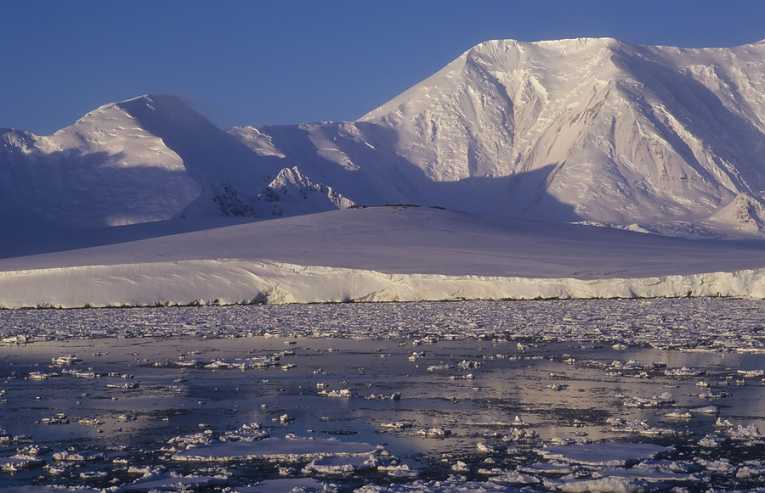Remote and icy, but vulnerable and warming - the poles have played out the opening scenes of global warming with a lot of noise and drama. The clamor of crashing ice shelves, and the deluging of polar bears, have grabbed headlines for a dozen years or more. Here is climate change at its most visible.
But there are subtler effects at work in the polar regions. They may be at a smaller-scale but are likely to play a bigger role to play in the grand finale. That's the message that was presented by Dr. Michael N. Gooseff to scientists at the 96th meet of the Ecological Society of America in Austin, Texas. He has been studying the consequences of warming on the complex ecosystems of the Arctic and Antarctic.
Land on the lurch
The fate of the frozen sea-ice cap of the Arctic has drawn most attention recently. But away from the ice, global warming is also quite literally shaking the foundations of the lands fringing the Arctic Circle. The frozen permafrost soils of Siberia, Canada and Alaska are on the move. Not only are those softer soils slipping, wrecking roads and other infrastructure, the uneven land is spilling muddy water into lakes and streams.
That's not something the local wildlife is used to, says Gooseff. ''Algae, insects and fish; all must deal with this increased level of sediments,'' he said. A longer frost-free season is also seeing microbes having more time to digest organic matter, releasing nutrients that plants haven't yet adapted to. So they too end up in region's streams and lakes. ''In September and October, we see a substantial increase in nutrients in the water. Concentrations increase many times for nutrients such as nitrate and ammonium.''
Frozen soils 'hold twice the carbon'
Whilst the effect of letting those nutrients loose is unknown, a danger that has become all too well-known is what happens when those microbes chomp down on the permafrost's vast carbon stores. They will release CO2 and methane, greenhouse gases that will speed up warming - and there's a lot carbon, until recently frozen, up there in the Arctic Circle. ''It is estimated that the permafrost contains twice the amount of carbon that is currently in our atmosphere,'' said Gooseff.
On the other side of the globe, in the desert-like conditions of Antarctica, warming is less. But there are still signs of environmental change. Summer-time streams and lakes are often to be found around Antarctica's ice sheets. These are like oases in the waterless ice-blown desert, to which life clings to the. They are home to slow-growing plankton, microbial mats and hair-like algae. ''While there are no bugs or fish in these waters, there are diverse microbial communities,'' said Gooseff. ''Some algae in the dry valleys go dormant for nine months or more and then begin to grown when hit by melt-water''
Microscopic changes adding up
''We expect in the next several decades that we will see the Antarctic start to warm up,'' he continued. And as it warms up, these streams and lakes will change too, expanding and moving, and maybe increasing the hold of these tiny microbes. They could be boosted, too, by melt-waters hitting the frozen Antarctica soil, which can be very rich in nitrates that such bugs love. Both factors could change the face of this fragile ecosystem in parts of the Antarctic.
So while the camera's may be panning over polar bears and ice-bergs, what is happening under the microscope may be just as important to the unfolding story of the remote icy corners of the planet.
Top Image Credit: Antarctica © Leksele










